There’s been a ton of chatter about the new Wendover Productions video diagnosing the challenges and strategic blunders at American Airlines. It’s worth a watch, but its diagnosis is far from complete and there are some factual errors in the piece which begins with the thesis that:
Since 2020, at almost every major moment when the airline’s management could have made the right or wrong decision, they made the wrong one.
This analysis opens discussing American making the wrong choices with its fleet, retiring Airbus A330, Boeing 767, and 757 aircraft at the start of the pandemic (not mentioned is retirement of the Embraer E-190s from the mainline fleet as well). That, combined with production delays at Boeing, meant that they didn’t have the planes to take advantage of the transatlantic travel boom that started in 2022.
American often blamed Boeing, rather than the aircraft retirement decision, but they actually deferred delivery of some new Boeing 787 aircraft as well. The airline’s network planning has favored:
- more flights on smaller planes rather than widebodies, and
- short haul domestic and Latin America over long haul.
That was a conscious bet on where they’d make money, not just a bet that long haul travel would take longer to recover from the pandemic.
There’s then discussion of how American tried to move its transpacific hub from LAX to Seattle but not why drawing down LAX was a mistake, which I’ll address below, and note that the video mistakenly describes American as having “long been the weakest airline at LAX” but pre-pandemic they were actually the largest by a thin margin.
And then it addresses American’s growth followed by pullback in Austin, which created an opportunity for Delta to move in and become an anchor tenant in the airport’s new terminal use and lease agreement.
The video inaccurately says that the airport was only an outstation for other airlines – Southwest today operates about 41% of seats from the airport. It also mistakes falling real estate prices in Austin for economic challenges, rather than being the result of policies that allowed more homebuilding (increased supply).
American’s attempt to build up Austin is framed as wasted time and a mistake, but doesn’t grapple with Delta coming in after them and building up the city.

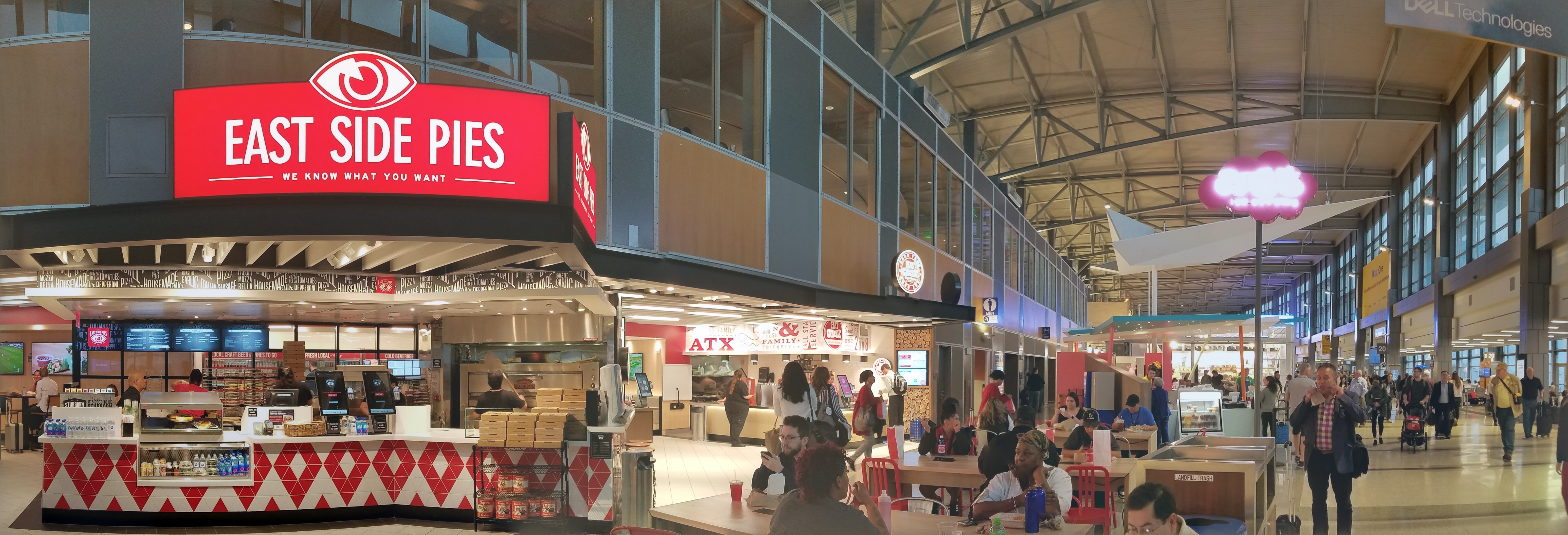
And it frames the Northeast Alliance with JetBlue as “wast[ing] time, resources and money.” But this was American’s only possible strategy to catapult them into size competiton with Delta and United. And while it ultimately lost an antitrust suit brought by the Biden administration, it’s a deal that had actually first been approved by the Trump administration.
It ultimately didn’t last, but while the partnership was in effect American saw massive growth in lucrative AAdvantage and credit card signups in the New York market. Given federal government signoff on the deal, this was a smart, big swing that failed – rather than a blunder.
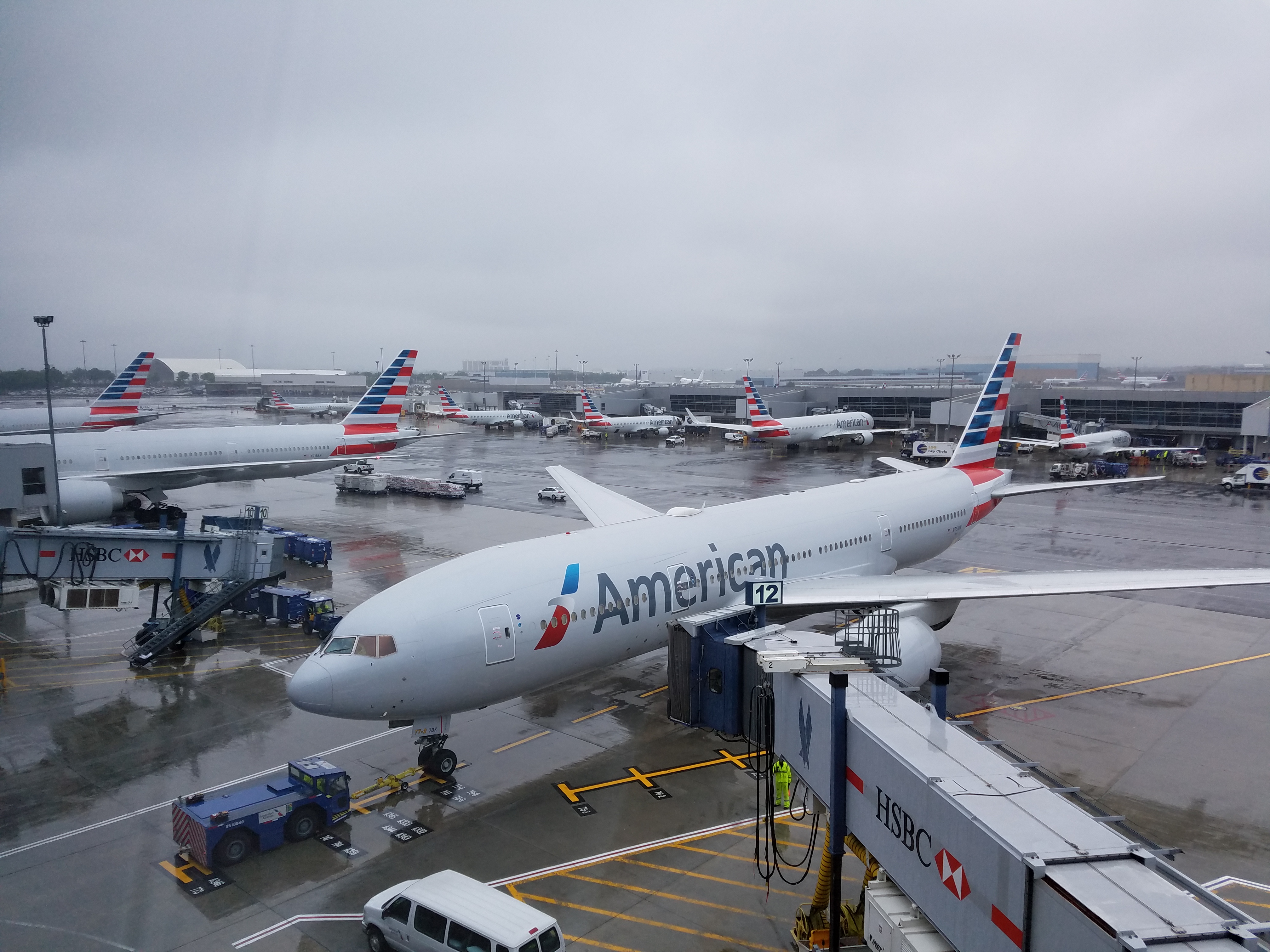
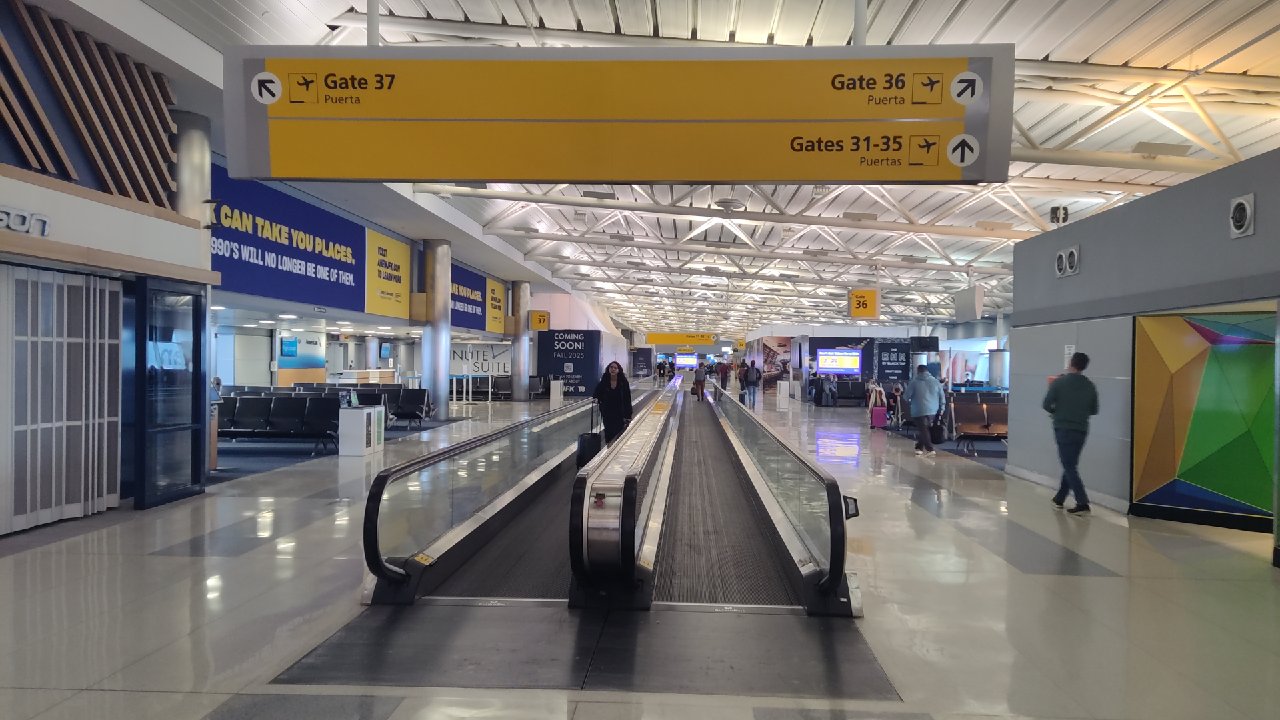
Then the video shifts to American’s move to stop working with travel agencies. It frames this just as a cost-cutting initiative. But it was a drive to get travel agencies to use new technology (that didn’t always work smoothly) that would allow them to sell not just tickets but ancillaries like seats that are higher margin.
One big piece of this that was a clear mistake was cutting off access to the lowest fares to all agencies not adopting the technology – but that included American Express and Chase customers trying to use their points, and that meant a big chunk of competitors’ credit card points business they lost revenue from.
There’s important nuance the piece misses, like that American’s plan to pull AAdvantage mileage-earning from some agency bookings never actually went into effect. And it takes the airline’s claim of $1.5 billion in lost revenue from the strategy at face value – rather than as an excuse that masks other problems. American has reversed its agency strategy, even paying smaller agencies 7% commissions on most domestic bookings, and says they’re on track to win back their full share of business but revenue hasn’t grown at all.
Finally, there’s a discussion of American’s failure to build back its schedule in Chicago. The city took gates away from American and effectively gave them to United. But when the video claims “American escalated this all the way into a prolonged lawsuit, but eventually they lost that, too” it’s simply wrong. American lost its long shot bid at a preliminary injunction, but the lawsuit proceeds.
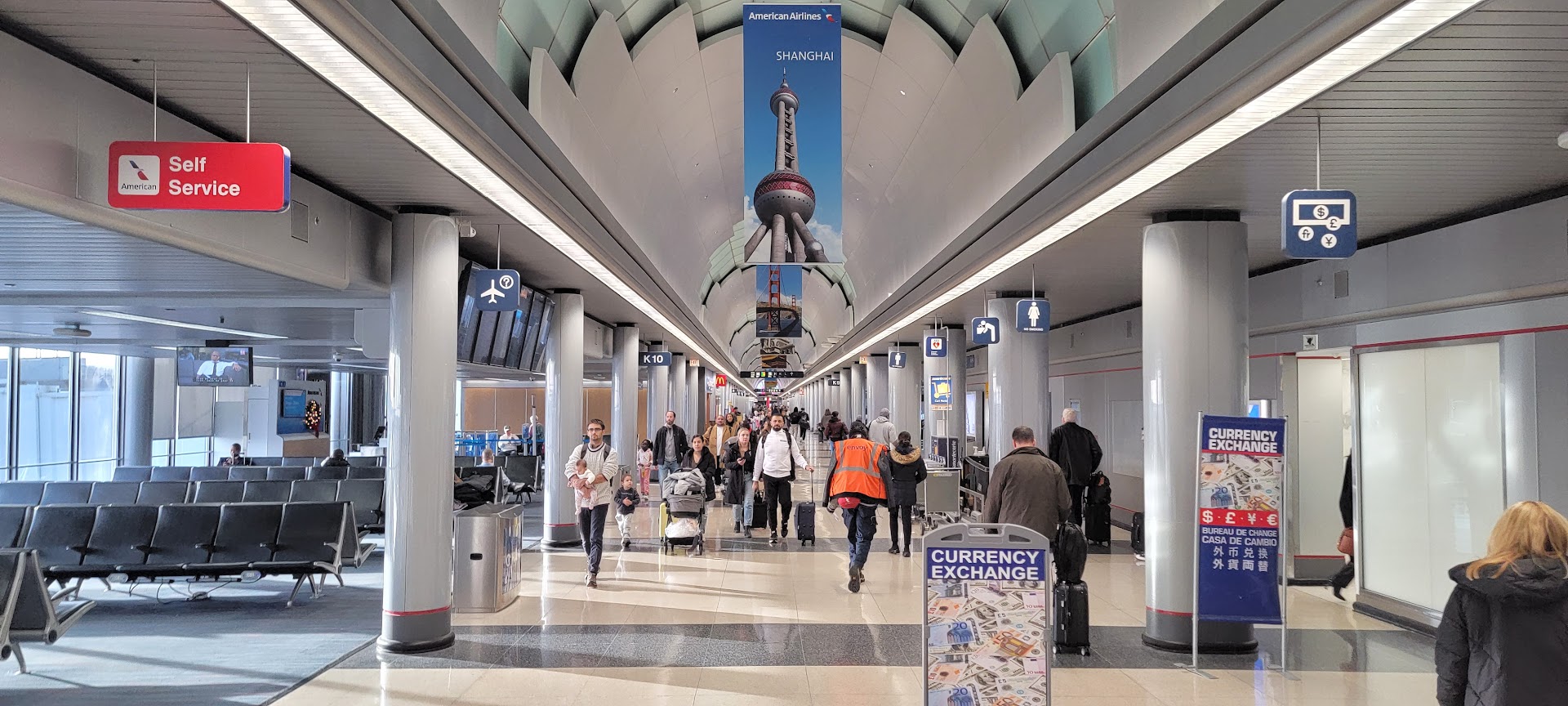
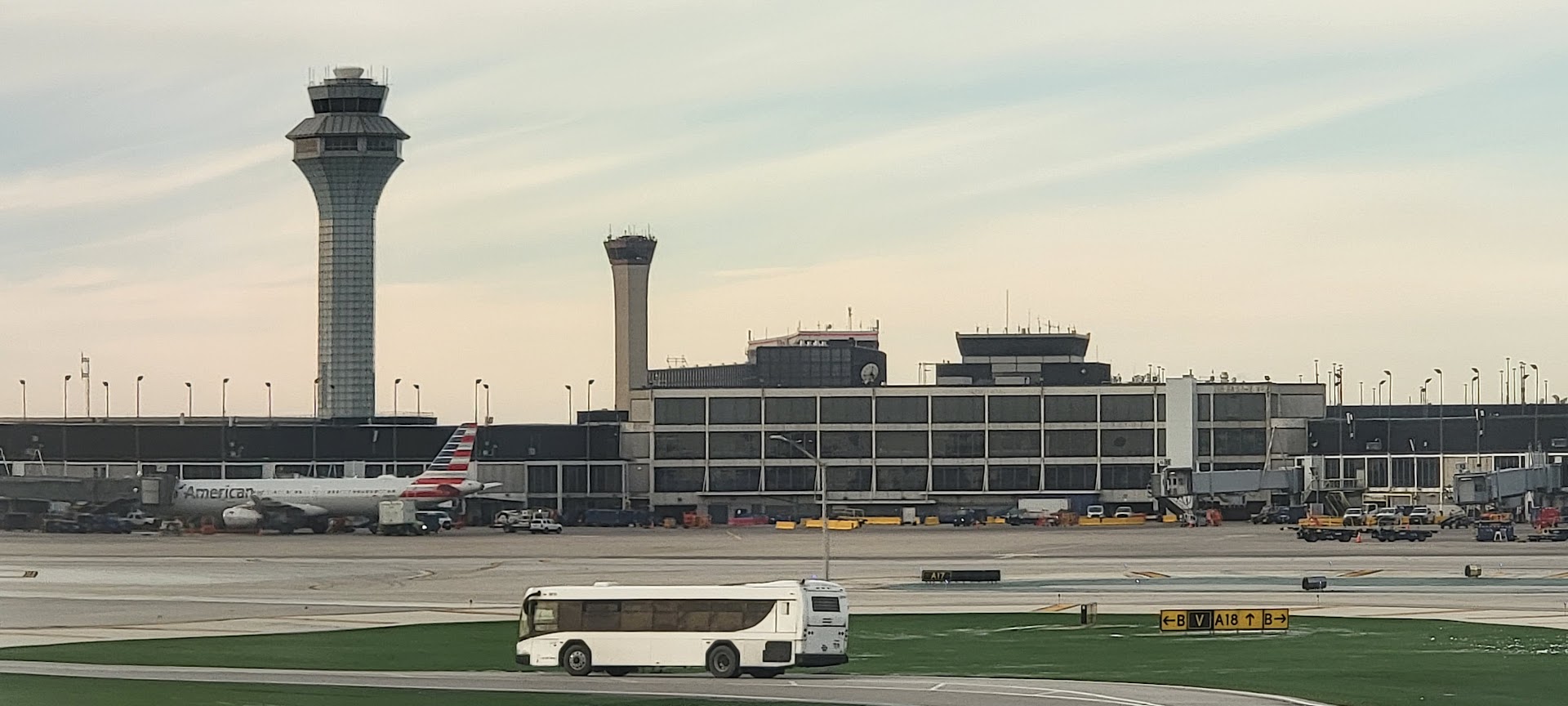
More broadly, I think it’s fair to say that:
- American missed the premium trend. Delta says that the trend towards customers being willing to pay more for a better product began 10 years ago. That’s when they date the move away from schedule, price and reliability being all that mattered for an airline. Coincidentally, 2015 is also when American began reconfiguring planes to make them less premium.
They removed business class seats from Boeing 777-200s. They squeezed more seats into planes across the fleet. They outfitted Boeing 787-8 long haul aircraft with just 20 business class seats. Their model was that they compete on price, not quality and they arranged the LOPA to match that.
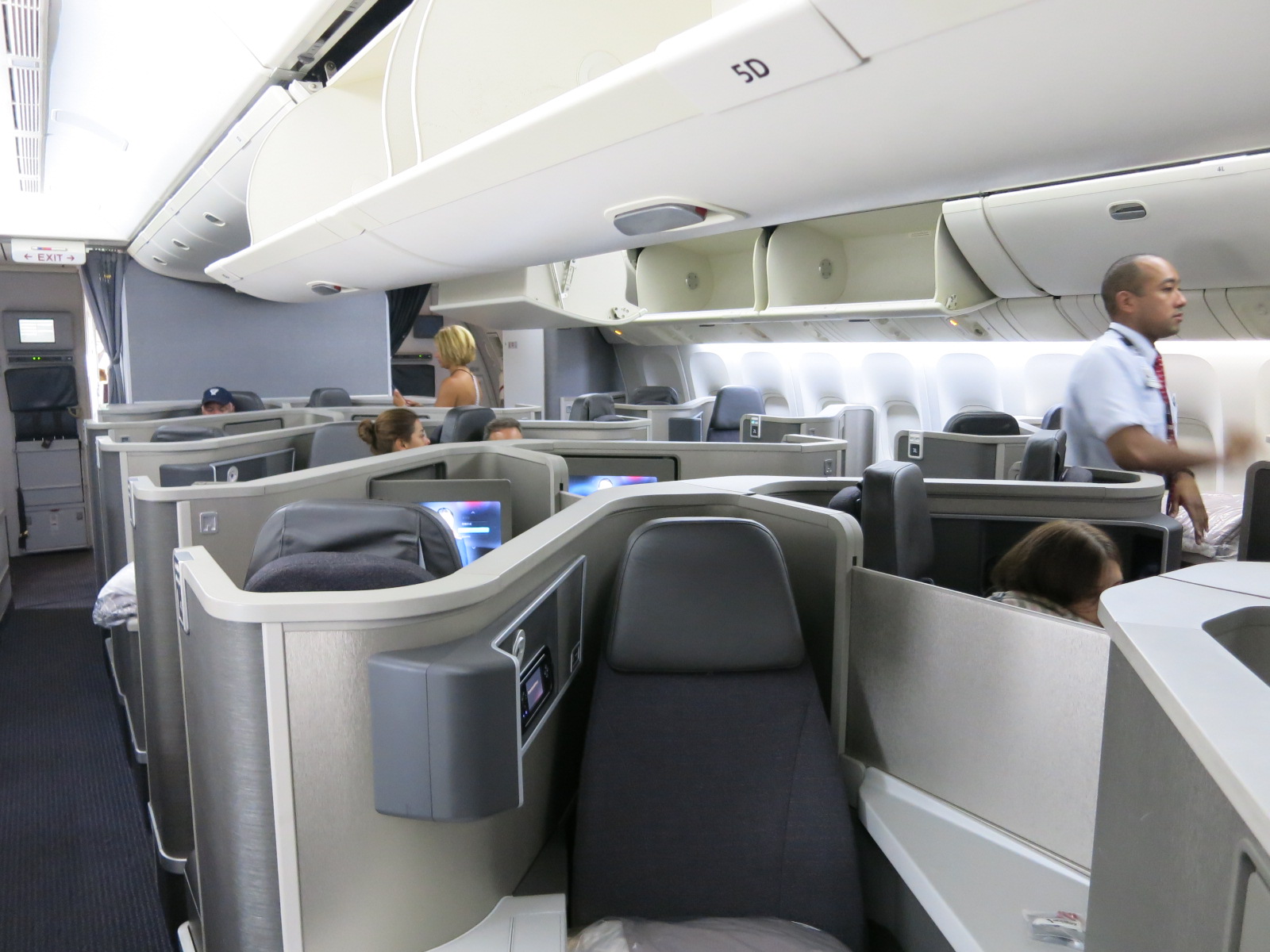
In 2018, as they were still removing premium seats, it was already clear to executives that they didn’t have enough premium seats to sell.
US Airways didn’t have much premium long haul demand from its historic hubs, so they competed for connecting traffic on price. Those low prices didn’t support a top product. And the low-end product, in turn, attracted low yields.
The DNA of US Airways management was that premium cabins aren’t how you make money at an airlines, squeezing in more passengers is. On the inaugural flight of American’s Aibrus A321T, a legacy US Airways Vice President told me they would reduce the premium component of the aircraft meant to fly between New York and both LA and San Francisco (they ultimately did not, but it was revealing of the mindset).

In fact, in 2018 current CEO Robert Isom told employees their competitive focus was on Spirit and Frontier, not Delta and United. This seemed obviously wrong even then because a strategy of chasing low fare Spirit Airlines could never succeed because American has high costs and needs to earn a revenue premium in order to profit.
- American retreated from its coastal hubs. American Airlines did the math wrong on New York, and could never figure out how to make money there (not realizing that they probably already were). They looked at an operation that was smaller than Delta and United and couldn’t figure out what to do with it. Former Chief Commercial Officer Vasu Raja used to describe the challenge as “too small to win, too big to walk away.”
In 2014 the mantra was that American would be the airline that brought people to New York rather than the airline for New Yorkers, and that’s how they would optimize their schedules. In 2018, they described the strategy as being a ’boutique’ airline in the city. They flew seemingly as little as possible to maintain their slot portfolio, and even lost track of some slots which they then lost.
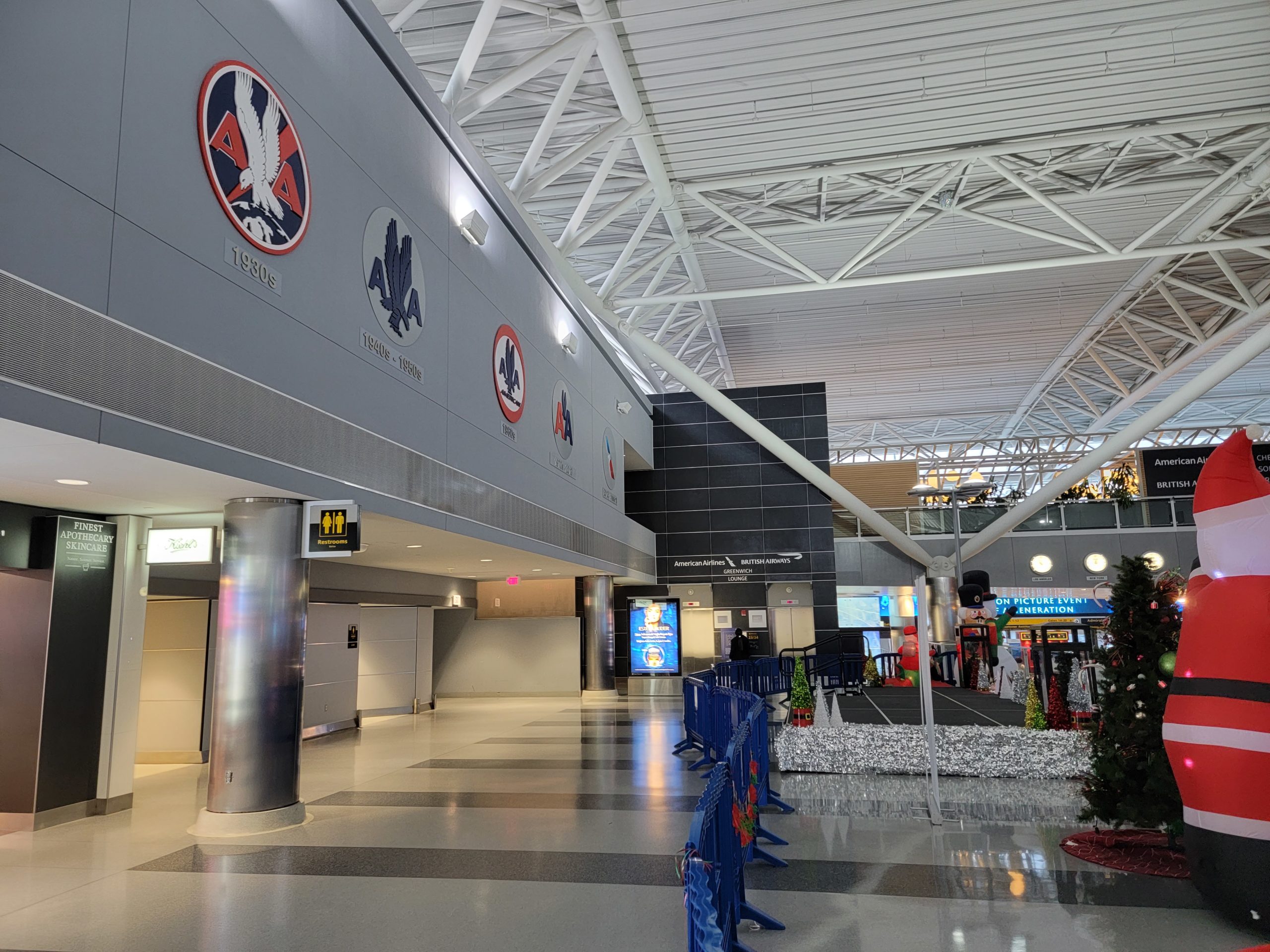
But American makes most of its profit from its cobrand credit card agreements. They’ve reported a 53% margin on AAdvantage. They’re earning roughly $3 billion annual profit from banks, but for full year 2024, made just $846 million. For the first three quarters of 2025, they’re at break-even ($12 million profit).
New York – and Los Angeles, Chicago and the Bay Area, where American also either pulled back or simply lacked strength – are crucial spend markets where the airline has lacked relevance. Delta, on the other hand, now says that they schedule flights to drive credit card revenue. That helps explain Delta’s buildups in Austin and Raleigh. And Delta’s growth in New York, Seattle and Los Angeles has helped make their cobrand the largest among the airlines (while American’s has fallen from #1 to #3).
- American degraded its product and customers began avoiding it. That product isn’t just inflight meals and clubs. It’s service and policies. It became harder to standby for an earlier flight. It became harder to through-check bags on partners. And they didn’t pay attention to how employees and customers would experience their new domestic product which was rolled out in 2017 – they didn’t build a mockup and made mistakes that they needed to rectify by retrofitting planes they’d already retrofitted. Ultimately their CEO at the time didn’t even try their new standard domestic product until it was in the marketplace for over six months.
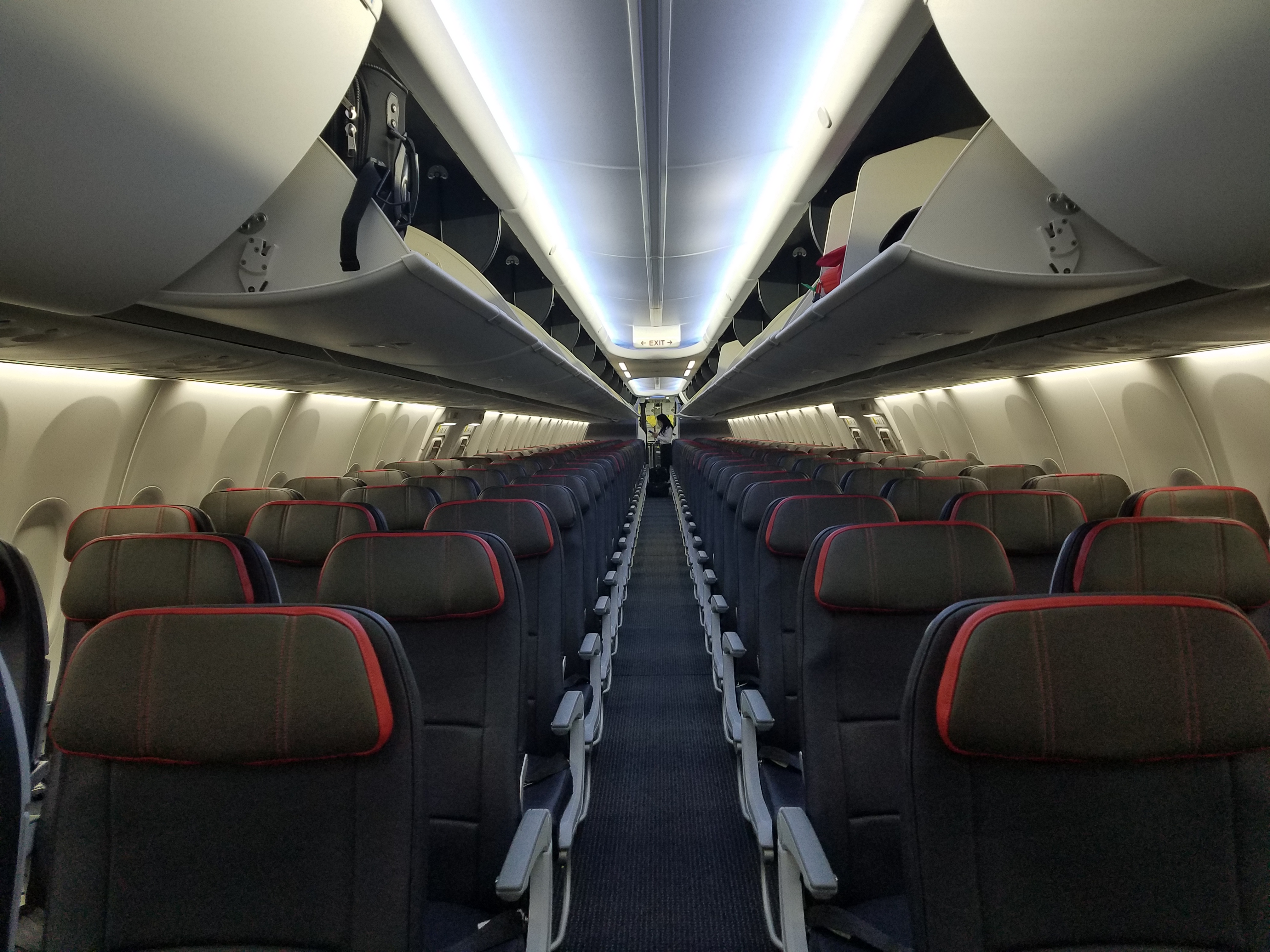
- American abused its balance sheet before the pandemic. They loaded up on debt to fund over $12 billion in stock buybacks. There’s nothing wrong with buying back stock when you don’t have productive places to invest profits. They’re just a tax-efficient form of dividends, and a company’s total outstanding shares should not only increase. But this put American at a structural cost disadvantage relative to competitors, when they’re already a high cost airline, and struggling to produce the revenue of competitors.
The Wendover Productions video does a nice job explaining some of the developments of American’s route network and fleet over the last six years – but the discussion that’s offered is too narrowed. There’s no mention of the airline’s soft product and service. There’s no mention of non-C suite employees or labor costs. So it’s also a bit incomplete. And consider that they’ve done a video in the past on the outsized role of credit card revenue in airline profits, it seems like a huge blind spot not to talk about the declining relative performance of the American Airlines cobrand despite far a stronger frequent flyer program than Delta.
More fundamentally, the problems American Airlines faces today aren’t new or the result of poor decision-making during the pandemic. They alienated shareholders, customers, and employees alike over the past decade. That falls at the feet of their previous CEO even more than their current one. I’m not convinced that they can clean this up without a clearly articulated vision from the top and sold from the top, which we haven’t seen yet. But the problems certainly are not new.


Parker (Former AA CEO) was the downfall of American Airlines. All Parker wanted to do was compete against Spirt and Frontier instead of Delta and United. Parker won as Spirt is now in bankruptcy and I hope AA does not join them in bankruptcy.
Blah, blah, blah. Oh no, the stock price. Better blame the ‘lazy’ workers. /s (folks, we’ve been in a silent recession for a little while now; not AA’s fault.)
Naw man, things are actually looking up for American Airlines; new Flagship Suites on the way; opening new Flagship lounges (PHL); and unlike their primary competitors (*cough* Delta *cough* United), they already ditched their ancient 757, 767, a330, etc. (seriously, Delta, 717, are you kidding?)
Fine, AA doesn’t fly to Africa, Greenland, or Mongolia (gasp!) But, at least for now, they’re still the only US carrier with an actual international First. And, darn, we can’t churn Barclays AAviator cards anymore; but they just gave us an opportunity for 90K points with Globe. Keep flying that ‘credit card with wings’!
Sure, I’d like to see more IFE and free WiFi for AAdvantage members, and those sliders are awful, but they still get the job done, and I’m gonna keep aiming for Platinum Pro each year for that sweet oneworld Emerald. I may prefer Delta (and jetBlue, and foreign carriers), but I still appreciate American (and United), and am not a doomer on them at all.
AA’s recipe for success, brought to you by US Air: 1) Be extremely cheap and cut as many corners as possible. 2) Hire the rudest, nastiest employees you can find and pay them peanuts. 3) Blame your customers for your problems.
I guess you won’t be appearing on the next season of Jet Lag! Good counterpoints though.
I’ve sounded a bit over the top perhaps on the ridiculous lack of MCE seating on AA’s newest planes, but the problem is this is more of the let’s compete with Spirit and Frontier thinking that didn’t work. If the loyalty program is the profit center, and MCE seating is the biggest loyalty program benefit, has someone at AA done the math in a way that makes any sense at all?
AA as always continues to be the easiest to poke a stick at, but is the one that for whatever reason we are all rooting for. Buried under a big debt load it needs a management team with real vision to effectuate a 5-10 year turnaround plan, not just some new business class seating. Inch by inch I suppose.
good summary and analysis, Gary.
what is shocking is how AA mgmt failed to realize what was wrong and change course. There are few companies that have made as many strategic mistakes and survive as long as AA has.
The real question is whether AA can be turned around. There are plenty of people that will tell us what is wrong w/ the world or AA.
Few can articulate a viable path forward, esp. AA leAAdership.
Continually being “too big to fail” but always skimming just above the surface is not the win to over customers, investors or employees.
Outstanding summary and analysis. Every bit of it accurate too.
After a decade+ of being PE, I happily walked away from this miserable airline, with its delays, surly crews, and subpar network (the sunbelt is not where I want to go). I enjoyed the frequent upgrades and the occasional card left at my seat, but not enough to keep my business (or my company’s for that matter). American is a decade if not more behind DL and UA. It generates outsized revenue and yet produces puny profit at best, and usually losses. It’s future is in the arms of another carrier that will swoop in and rebuilt the house from the ground up, not the other way around. It also will likely lead the industry into another bankruptcy round, eventually.
Spoiler alert!
Thanks for the analysis, Gary, and everyone for the comments so far. Very useful to pair all this alongside the video.
(Petition for Sam to add Bary to his fact checking team!)
@Peter — I enjoy how AA’s lack-of MCE is the ‘hill you’d die on’ as ‘EU261 for the USA’ is my own.
@Tim Dunn — Isn’t ‘too big to fail’ literally most major companies strategies these days anyway? I did enjoy your use of ‘leAAdership’… I’d add, if only ‘mAAnAAgement’ would ‘leAAd’ more.
@L737 is gonna be so pleased to see Gary kept his word and posted Wendover’s video.
The only smart strategic decision AA made was the arrangement with Jet Blue. Everything about that partnership made sense. How could they know the plan would be foiled by TDS infected government officials?
Today they seem to be taking baby steps in the right direction. The question is can they fix enough problems fast enough to save the airline from bankruptcy?
@David P — UA is cheating B6 outta reciprocal lounge access. AA was good to its own elites (and to B6), which was especially nice for elites and for those in Mint, where applicable.
Yeah, it was a mistake by the prior administration to go hard on anti-competition with the NEA; and, it was merely a matter of timing; had AA and B6 tried this now, it would’ve worked without interference (so long as they pay their ‘gratuities’ to our Dear Leader).
The video doesn’t claim Austin housing prices fell, in fact the opposite, which led to decreased demand at the airport.
While Ohtani gets on base 100% of the time (going 9 for 9 the other night), Isom and his executive team is still batting .000 at practically everything. And AA still lacks a competent board after all of these years. What a waste.
@1990 – Bah, yes! Blast the comment posting delay
I was definitely wondering about your thoughts when I watched the video. It almost felt like the video was created by an AA exec that just felt like they couldn’t catch a break and always made the wrong decision but it was never really their fault. The video wasn’t critical of AA management, which, as you mention, was chasing after Spirit and Frontier despite being a high cost airline, and how that influenced all their other decisions. AA long had the mentality that on time D0 was all that mattered but rather than invest to make D0 possible without causing passengers to misconnect, flights to not be catered, etc. they just put pressure on gate agents and flight attendants to close the door. Management failed again and again. Bad breaks like the failed alliance with JetBlue certainly didn’t help, but the bigger issue has been management failure over the past decade.
Another Wendover piece that looks to have been sponsored by UA. It was most obvious in the first chart where they list highest volume and its inversed. So UA is on top with the lowest seats and flights.
Here is the uncomfortable truth about American. This is a governance problem, not a fleet or marketing problem. A board that signs off on a sales experiment that vaporizes an estimated $1.5 billion in revenue, forces a public reversal, and ends with the chief commercial officer getting sacked has failed in its core job of risk oversight. You do not greenlight ripping fares out of agency channels without a working migration path, then watch corporate share crater, then claim you are “winning it back” while revenue stalls. That is how you break trust with your highest-yield customers and your distribution partners. The timeline is public. Management pushed the NDC hard pivot, corporate bookings collapsed, guidance was cut, the architect exited, and American began walking it all back. The next quarter they were still telling investors they lost money in every region. That is not bad luck, that is board-level negligence. The same board also presided over a capital structure that still carries roughly thirty billion dollars of net debt, which means every operating miss is amplified by interest expense before a single meal is catered or a seat is sold. There is no credible turnaround while this board and senior team keep congratulating themselves for “resetting” what they broke. Swap them out, bring in directors with real distribution, enterprise sales, and network planning expertise, and stop letting airline strategy be written around press releases and slideware. Until that happens, American will keep running in place while Delta and United lap them in card economics, corporate share, and pricing power. Also, the culture is completely toxic and it shows. Miserable employees mean miserable passengers, on average at least. Until shareholders meaningfully revolt, nothing at AA will truly be fixed.
@Mike Hunt — Agreed on your statement: “Management pushed the NDC hard pivot, corporate bookings collapsed, guidance was cut, the architect exited, and American began walking it all back.” Clearly, New Distribution Capability (NDC) was a failure at AA, and justifiably, many were upset. (@Tim Dunn and @Max Power should be thanking AA for all the benefits DL and UA got from that.) But, let’s be real, the folks that complained the loudest about AA (or any airline) are ironically often those traveling using “Other People’s Money” (OPM), for work, etc. Namely, because their corporate travel agencies (and their employers) no longer fund ‘premium’ cabins anymore. Sure, you could self-upgrade, or ‘hope’ for complimentary upgrades (which are less-and-less a thing.) But, once more, folks traveling OPM are cheap.
Lot of missteps which will be hard and long to fix. Assumption that business travelers only care about schedule. Business travelers could be forced into aa.com therefore by-passing travel agencies. Too much concentration on just CLT and DFW. Retiring the A330s. Assuming all coach passengers are Frontier like passengers. Not enough emphasis and investment in operations and operational recovery. Heavy banking of all hubs.
American is fortunate (or not?) to have oneworld partner Alaska (and Hawaiian) to coordinate with (since they really do not operate international long-haul); whereas, Delta doesn’t really have a domestic ‘partner’ airline; United ‘sorta’ does with the new B6 limited ‘partnership.’
@Adam — I’m always down to blame over-paid top management over the workers, so thank you. However, you sure Delta or United didn’t ‘pay’ for this Wendover video, instead? Like, they can’t say enough good things about ‘ancient’ 757, 767, and a330s (*cough* DELTA!) Like, as a passenger, I definitely prefer newer aircraft (gimme AA’s 787, especially with the new Flagship Suites, over DL’s 763, any day). Then, there’s all that praise for ‘Seattle’ as if it were some ‘perpetual fusion generator’ for profits, simply because SEA is literally closer to E. Asia. Psh.
@L737 — I, for one, welcome our (comment delay) overlord. Ya know, I’m fascinated by the different viewpoints on here. Clearly, there are some who are industry-analysts (promoting their particular airline, or the ‘investment’ opportunity or risk, therein); we got workers (crews and support staff, active and retired); then, within the consumers, there are the OPM travelers and the leisure folks; finally, we got the banterers (guilty, sometimes *wink*).
Sam Denby is an unrepentant moron who speaks authoritatively on subjects while ignoring context, cherry-picking facts, and “wet streets cause rain”ing. He’s also a scummy leftist that hates capitalism and democracy. Anyone who listens to anything he has to say has a severe case of Gell-Mann amnesia.
“It is not the critic who counts; not the man who points out how the strong man stumbles, or where the doer of deeds could have done them better. The credit belongs to the man who is actually in the arena, whose face is marred by dust and sweat and blood; who strives valiantly; who errs, who comes short again and again, because there is no effort without error and shortcoming; but who does actually strive to do the deeds; who knows great enthusiasms, the great devotions; who spends himself in a worthy cause; who at the best knows in the end the triumph of high achievement, and who at the worst, if he fails, at least fails while daring greatly, so that his place shall never be with those cold and timid souls who neither know victory nor defeat.” ― Theodore Roosevelt
Hindsight is always 20/20 – Howard Cosell
*Does* the ORD gate allocation lawsuit proceed? United is claiming victory, and it has been reported as such. Possibly just a decision against an argument, but the case is ongoing?
https://finance.yahoo.com/news/judge-sides-united-battle-more-220929038.html
“Hindsight is always 20/20” Cosell was dead wrong. Ask people what caused the Great Depression, you’ll get many conflicting reports. By definition, they can’t all be 20/20. I find many have very flawed hindsight. Relevant here is that AA’s upper management’s hindsight on AA’s woes won’t match with what many of us feel to be the actual case. And, that’s why hindsight is so important. How can AA improve tomorrow with today’s decision if they haven’t learned from the past?
Mike is absolutely right. At the core, this is all about a governance problem that has gone on for 20 years.
AA failed to get its costs down post 9/11, thought it could do an out-of-court restructuring and then failed to seek Chapter 11 when CO, DL, NW, UA and US all did it and got significant cost reductions.
Again, regardless of the platitudes that some tout, it is perfectly legitimate to ask how a company with tens of billions in assets and the use of other people’s money has failed to recognize FOR 20 YEARS that their strategy is not working when other carriers have managed to overcome crisis after crisis.
AA has tried for 20 years to fix the problem w/ airplanes and to blame its people and to fire half of its best customers – and still hasn’t admitted at least publicly that they got it all wrong.
and 1990, do you realize that a fairly good chunk of DL’s 330-200/300 fleet is half the age of AA’s 777-200ER fleet?
And DL IS retiring 767s but didn’t do it all in one fell swoop like AA did or think like UA that by putting in an uncompetitive business class product even if the airline itself thinks it it the greatest think since sliced break it makes the plane any newer.
Again, the question is whether AA can turn the ship around given that B6 and WN are both turning themselves into legacy carriers – perhaps lite at first – but could in time be capable of winning over AA corporate passengers in major AA markets.
yeah, AA should be scared that it can’t turn itself around when other carriers are managing to do it.
Is Bob Crandall still alive? If so, I wonder if he would come back and run this airline?
It’d be nice to have a real airplane guy at the helm and not bean counters.
Great article. Much to ponder.
I agree with others that D0 should also be in the top 10 of AA bad decisions.
Corrosive to both employee moral and customer experience, it did not solve the core issue: passengers not arriving/unboarding on time.
Even in cases where D0 was effective in achieving on-time pushbsck, it left arrivals waiting for gates to free up.
Sam definitely has a general bias towards United but regardless, I appreciate his reach and his ability to generate a discussion like this one which has been super insightful.
@1990 – Healthy meta right now here, woot woot!
AA should be very concerned. Flashy new business class seats are nice, but nowhere near enough. Folks think about the overall value proposition, and I think AA needs to offer NYC customers a lot more now to secure their loyalty, because between new lounges, first class, expansive extra legroom sections and the brand new JFK T6 that’s going to offer B6 customers with great connectivity to star alliance carriers, the future of B6 is going to be here in the next 12-18 months.
To counter that, AA thus far has a small number of XLRs that it will fly JFK-LAX (with reduced premium capacity compared to the 321Ts and barely any MCE seating) and announced one flight to Tel Aviv. If you’re making money on the credit card spend and loyalty program, you have to be competitive in NYC, and AA is going to look flat at best as compared with B6 and DL.
And B6 will have a much easier time poaching AA customers than DL customers. I have to imagine the status match offer that B6 is going to launch ~12 months from now is going to directly target AA’s top loyalty program members. Hopefully by then B6 will rename its idiotic loyalty program names (Mosaic 1, 2, 3 and 4 sure has a ring to it…) so folks will be excited to match over to Mosaic Spearmint or whatever (with the cool logo of a spear crossed with a mint leaf to be designed).
As for WN… I suspect they will be watching B6’s roll out very carefully, but they still feel like they are multiple years away before being able to really offer first class / lounges and be competitive in that manner (much slower than Elliott would like I am sure).
You cannot accidentally make the wrong decision 100% of the time. Even a 5 year old would make at least one right decision over a 10 year period when presented the options. They’re doing it on purpose because they want to file bankruptcy again and pay off all those airplanes that they bought, the new headquarters and the want to take the employee pensions that they were only able to get frozen when they tried to take them the first time in bankruptcy. You’ve got a bad board backing a bad executive team, protecting each other and patting themselves on the back while lavishly rewarding themselves with 30+ million dollar a year compensation while their stock price is in the toilet. The whole thing is criminal. The government needs to look at what’s going on here and not let them file bankruptcy again. I’m shocked there hasn’t been a shareholder revolt. Shocked!
Camille,
your “odds” statement is absolutely correct.
However, it really isn’t possible in today’s world to get rid of airplane debt in chapter 11. There is just too strong of a market for any airline to be able to really cut airplane acquisition and ownership costs. NK’s chapter 11 is proving that.
You may well be right that AA mgmt is looking for a reason to get rid of AA’s frozen pensions but more importantly to cut its labor costs.
But again, now is not the right time. Although the pendulum is swinging back fairly quickly, the demand for pilots and mechanics is still strong enough that any airline that attempts to cut its labor costs in bankruptcy will lose employees.
even w/ lower costs, AA flies too many routes that don’t make money; their entire system margins have been less than 2% for several years which means there is a lot of their network that doesn’t work financially even at lower labor costs.
AA is simply valuable to banks and leasing companies that make money keeping AA on perpetual life support
@Tim Dunn – Very well said. And I fully agree. American isn’t a zombie yet, but it’s living off the patience of banks and lessors who profit from keeping it on a financial ventilator rather than letting it collapse. With margins under pressure and loyalty revenue doing much of the heavy lifting, American can’t afford another shock to its system. If the Credit Card Competition Act ever becomes law, for example, it will hit the one dependable source of profit the company has left, and there’s no safety net big enough to catch that fall.
@Mike Hunt — Rest easy; there’s no way anything like that is getting passed anytime soon. However, we are probably in a silent recession, but for the AI bubble, so… ‘brace! Brace! BRACE!’
@1990 – It’s indeed a very low probability, but the chances aren’t zero, either. As stated, it was just one example. There are many other ways things could go sideways, including a messy economic deleveraging at large.
@Mike Hunt — Payin’ off debt; not a bad idea, if you can; heh, we still talking American Airlines here, or the US/global economy at-large?
I’d be curious to hear what effects the mass layoffs of Customer Relations, the Central Baggage Resolution Office and AAdvantage Customer Service nearly two years ago has had. They claim that despite letting go 700+ of their most experienced employees who diligently worked to resolve issues for and to service customers the newly created Customer Success department would be better for everyone. How many customers have gotten frustrated with bot responses and generic help from overseas call centers and simply stopped flying AA? Shiny new airplanes or airplane interiors don’t fix that. Especially for customers who generally fly in coach.
I wonder if in the next couple of years, this premium trend reverses a bit as AA is investing money on trying to be more premium. It takes time and if that changes it’ll be yet another wrong decision where they both missed the boat on a decade plus of cash generation via the premium trend and then wasted money on chasing that a bit too late.
@ 1990. How does the USA pay off its debt and still intiate your favored programs of a better life for everyone at G expense? Serious question. Tax the rich is not a serious answer.
@Jack the ladd. I don’t read the idiot’s posts. But, I am also confused at how frequently the uninformed think our problem is not enough taxes instead of irresponsible spending. The 1% pays over 40% of income taxes. How dare they not pay 100%.
How do we filter out “1990”?